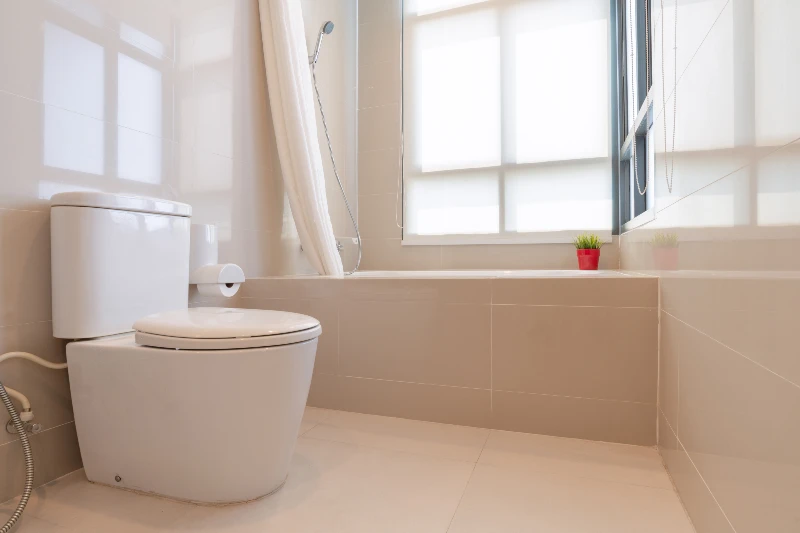With a variety of toilets on the market, it can be hard to decide which one is right for your home. There are many factors to consider when choosing a toilet, such as types, cost, flushing performance, and water efficiency. This guide will help you sort through the different types of toilets so you can find the perfect one for your needs.
Contents
1. Check the Plumbing
If you’re creating a bathroom from scratch, you may pretty much select any type of toilet you like and design your plumbing around it. But, if you have an existing home with plumbing already in place, it’s important to check that your new toilet will work with the current system.
Meanwhile, you should end up with a toilet that doesn’t fit or isn’t compatible with your home’s plumbing.
2. Determine Your Pan Type
There are two main types of toilets: one-piece and two-piece. The tank and bowl of a one-piece toilet are combined into a single unit. A two-piece toilet has a separate tank and bowl that are bolted together. One-piece toilets are generally more expensive, but because there are no crevices for dirt and filth to tuck into, they are also simpler to clean.
3. Use Paper or Smart Toilet That Doesn’t Need Paper
A Paper toilet is the standard type of toilet that most people are familiar with. They use paper to wipe themselves clean after going to the bathroom. Smart toilets, on the other hand, don’t require paper. Instead, they have a built-in bidet system that cleans you with water. It is a modern design that is becoming more popular in homes.
4. Types of Toilets
There are many different types of toilets available on the market, each with their own advantages and disadvantages. The most common types of toilets are back to wall toilets, close coupled toilets, and wall hung toilets.
Back to Wall Toilets
Back to wall toilets are a great option if you’re looking for a toilet that is both stylish and functional. These toilets are usually made from ceramic or porcelain, and they’re mounted on the back wall of the bathroom.
This gives your bathroom a clean, streamlined look. Back to wall toilets are also easy to clean because there are no gaps or crevices for dirt and grime to build up.
Close Coupled Toilets
Close coupled toilets are a popular choice for many homeowners because they’re affordable and easy to install. These toilets are similar to back to wall toilets, but they’re not mounted on the wall. Instead, they’re mounted on the floor.
This makes them a good option if you’re not comfortable drilling holes into your wall. Close coupled toilets are also easy to clean because there are no gaps or crevices for dirt and grime to build up.
Wall Hung Toilets
Wall hung toilets are a great option if you’re looking for a toilet that is both stylish and functional. These toilets are mounted on the wall, which gives your bathroom a clean, streamlined look.
Wall hung toilets are also easy to clean because there are no gaps or crevices for dirt and grime to build up. One disadvantage of wall hung toilets is that they’re more expensive than other types of toilets.
5. Flushing Performance
One of the most important factors to consider when choosing a toilet is flushing performance. Toilets with poor flushing performance can waste water and leave behind unwanted residue. Toilets with good flushing performance will quickly and effectively remove waste from the bowl. When testing flushing performance, pay attention to how long it takes for the toilet to flush and how much water is used.
6. Water Efficiency
Toilets that use less water are more environmentally friendly and can help you save money on your water bill. Toilets with dual flush technology use different amounts of water depending on whether you’re flushing solid or liquid waste.
Low-flow toilets use less water than standard toilets, but they may not be as effective at removing waste. When comparing water efficiency, be sure to consider both the amount of water used per flush and the overall performance of the toilet.
7. Cost
Toilets vary widely in cost, depending on the type and brand. Back to wall toilets and close coupled toilets are usually the most affordable options. Wall hung toilets are more expensive, but they offer a number of advantages that may be worth the extra cost.
When deciding how much to spend on a toilet, it’s important to consider your budget and the features that are most important to you.
Final Thought
When choosing a toilet, there are many factors to consider, such as plumbing, pan type, types of toilets, use paper or choose smart toilet, flushing performance, water efficiency, and cost.
Hope this article will help you sort through the different types of toilets so you can find the perfect one for your needs.
